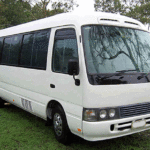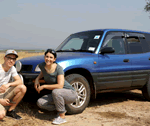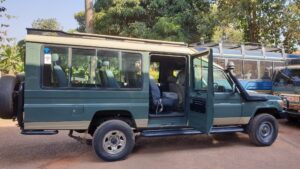Driving with children can be one of the most joyful family experiences, offering opportunities to explore new places and create lasting memories. However, ensuring the safety of your young passengers requires extra vigilance, preparation, and adherence to strict safety practices. Many drivers overlook essential guidelines for traveling safely with children, which can lead to avoidable accidents and injuries. This guide offers comprehensive and practical tips to help protect your children and keep your journey safe and stress-free.

1. Proper Seating and Positioning for Children
-
Back Seats for Safety: Children under 12 years should always travel in the rear seats, where they are safest during collisions. Front seats expose children to airbags, which can cause injury to small passengers.
-
Use Age-Appropriate Child Seats: Children aged 2 to 6 years must be secured in properly installed child safety seats or booster seats. This helps prevent injuries and increases protection compared to standard seat belts alone.
-
Keep Children Away from Doors: Young children may unintentionally open car doors while the vehicle is moving. To prevent this, ensure doors are centrally locked and children are seated away from doors and windows.
-
Lock All Doors: Utilize your vehicle’s child safety locks and central locking features to prevent opening of doors during motion, protecting children from falls or accidental exits.
2. Buckle Up Every Time
-
Seat Belts Save Lives: Enforce strict seat belt use for every passenger, especially children, every trip no matter the distance. Seat belts reduce fatal injury risks by over 90% in crashes.
-
Lead by Example: Adults should consistently buckle up as well, reinforcing the behavior and setting a safety standard for children.
-
Check Fit and Comfort: Ensure seat belts and child restraints fit snugly without slack but do not cause discomfort, which can tempt children to loosen them.
3. Secure Loose Objects and Vehicle Gear
-
Remove or Secure Loose Items: Unsecured objects such as bags, toys, or electronic devices can become dangerous projectiles in sudden stops or collisions. Store these safely in trunks or seatback pockets.
-
Fix Vehicle Defects: Address any car damage, like loose roof liners, malfunctioning seat belts, or rattling objects, before driving with children. Safe vehicle conditions are critical to passenger security.
4. Complete Vehicle and Surroundings Check Before Driving
-
Exterior Check: Before starting your journey, examine around and under the car for children playing nearby, as they may hide behind or under vehicles.
-
Interior Check: Ensure all children are seated and safely buckled before moving.
-
Adjust Mirrors and Seats: Make sure you have clear visibility and are comfortable to minimize distractions while driving.
5. Avoid Distractions — Don’t Text and Drive
-
Stay Focused: Texting, using a smartphone, or engaging with multiple devices while driving significantly increases the risk of accidents. When driving with children, your attention should be fully on the road and your passengers.
-
Use Hands-Free Devices if Necessary: If you must communicate, use hands-free calls and set your phone to “Do Not Disturb” mode.
-
Plan Ahead: Set GPS routes, music, and climate controls before starting your trip to avoid distractions.
6. Drive Defensively and Follow Traffic Rules
-
Observe Speed Limits: Always drive within posted speed limits, especially in school zones and residential areas where children may be present.
-
Maintain Safe Distances: Keep ample space between your vehicle and others to allow for safe stopping distances.
-
Avoid Sudden Maneuvers: Accelerate and brake smoothly to prevent unsettling children and minimize the risk of injury.
-
Follow Local Laws: In Uganda, driving is on the left side, seat belts are mandatory for all passengers, and mobile phone use without hands-free devices is prohibited.
7. Plan Travel with Children’s Needs in Mind
-
Frequent Breaks: Take regular breaks on long trips to allow children to stretch, use restrooms, and avoid restlessness.
-
Suitable Timing: Travel during daylight hours when visibility is better, and roads are safer.
-
Bring Essentials: Carry snacks, water, entertainment (books, toys), and a first aid kit specific for children’s needs.
8. Educate Children About Vehicle Safety
-
Teach Seat Belt Importance: Explain to children why seat belts and child seats are crucial for their safety.
-
Establish Rules for Behavior: Make clear rules about staying seated, not distracting the driver, and not opening doors without permission.
-
Practice Safe Getting In/Out: Supervise children when entering or leaving the vehicle, especially on busy streets.
9. Emergency Preparedness
-
First Aid Knowledge: Carry a well-stocked first aid kit and know basic child first aid procedures.
-
Emergency Contacts: Keep emergency phone numbers and identification documents accessible.
-
Vehicle Breakdown Plan: Prepare a kit with water, flashlight, spare tire tools, and blankets, especially for rural or long trips.
Additional Advice: Regulatory Updates and Community Safety
Uganda’s traffic authorities have emphasized the importance of child safety on the roads, including recent initiatives for safe school zones with lower speed limits near schools (30 km/h), increased awareness campaigns, and enforcement of child restraint laws. Parents are urged to ensure their children use safe transportation, avoid overcrowding vehicles, and accompany young children to and from school.
By following these comprehensive safety tips, you can ensure that traveling with children is not only enjoyable but also secure. Safe driving habits protect your most precious passengers and contribute to road safety awareness in communities.
For more information about vehicle safety, car rental options, or specific child-friendly travel arrangements in Uganda, feel free to contact Uganda Car Rental Services at info@ugandacarrentalservices.com or call +256-700-135-510.









Related Articles
Best Time to Visit Uganda for Safaris: Month-by-Month Guide
Why Choose a 4×4 Car Rental in Uganda for Your Safari Trip
Cheap Car Rental Uganda: Save Money Not Sacrificing Quality